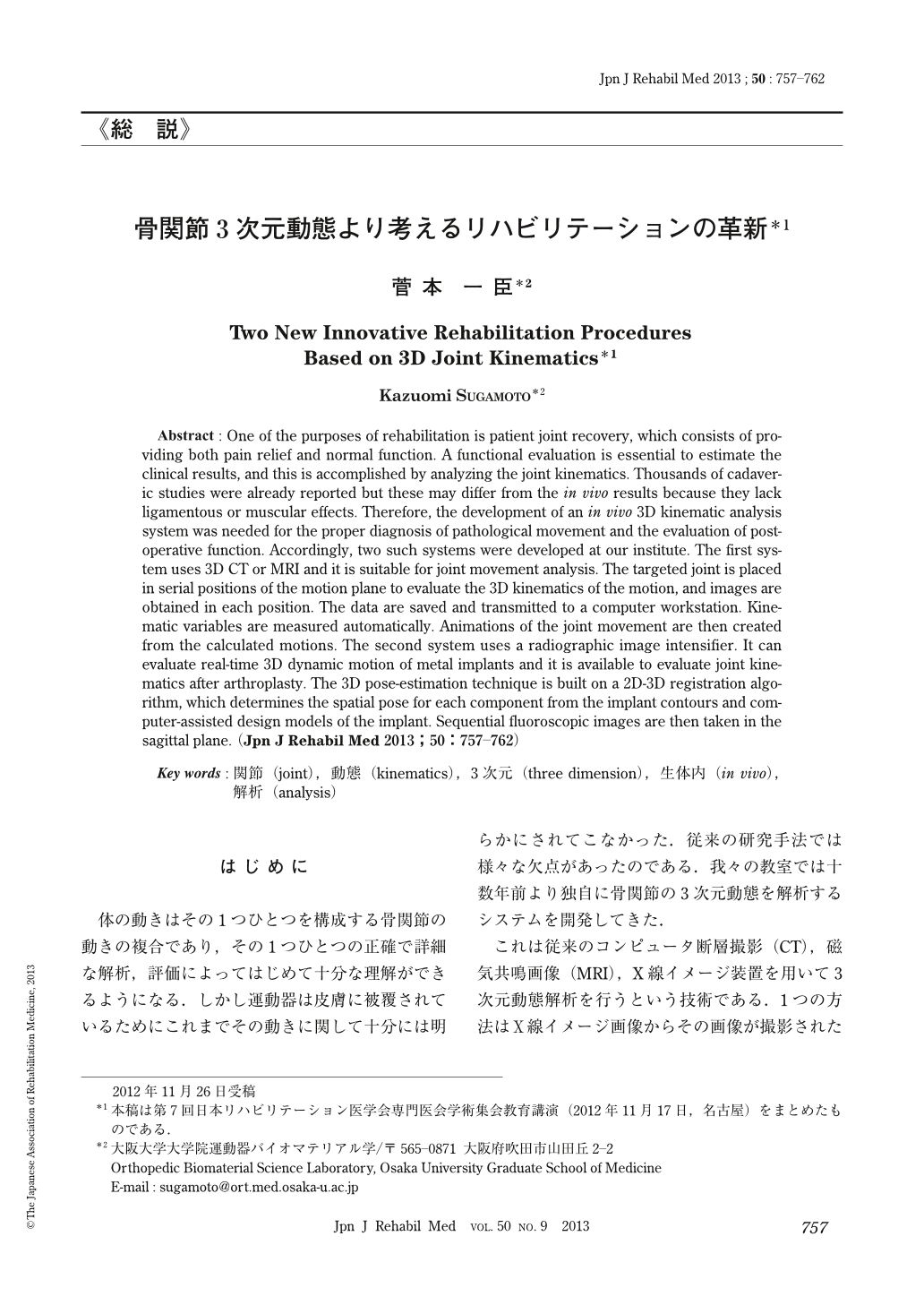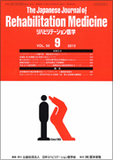Japanese
English
- 販売していません
- Abstract 文献概要
- 1ページ目 Look Inside
はじめに
体の動きはその1つひとつを構成する骨関節の動きの複合であり,その1つひとつの正確で詳細な解析,評価によってはじめて十分な理解ができるようになる.しかし運動器は皮膚に被覆されているためにこれまでその動きに関して十分には明らかにされてこなかった.従来の研究手法では様々な欠点があったのである.我々の教室では十数年前より独自に骨関節の3次元動態を解析するシステムを開発してきた.
これは従来のコンピュータ断層撮影(CT),磁気共鳴画像(MRI),X線イメージ装置を用いて3次元動態解析を行うという技術である.1つの方法はX線イメージ画像からその画像が撮影された骨の空間位置座標を推定するものである.X線画像はいわば骨の影絵であるから,その画像を元に撮像された骨の正確な空間位置座標を開発したコンピュータプログラムにて推定することができる(2D-3Dレジストレーション法).
さらにもう1つは関節動態の軌跡上での複数肢位でCTまたはMRI撮影を行い,各肢位で撮像された画像から骨の移動距離,移動回転角度を算出する方法である(voxel based registration).これらの方法は組み合わせたり,応用活用することでほぼすべての骨関節の動きを解析できるようになった.
これを用いることにより正確で詳細な術前手術計画,術後評価ができるようになって手術およびその後のリハビリテーション(以下,リハ)治療体系が大きく変わろうとしている.その一部をご紹介したい.
Abstract : One of the purposes of rehabilitation is patient joint recovery, which consists of providing both pain relief and normal function. A functional evaluation is essential to estimate the clinical results, and this is accomplished by analyzing the joint kinematics. Thousands of cadaveric studies were already reported but these may differ from the in vivo results because they lack ligamentous or muscular effects. Therefore, the development of an in vivo 3D kinematic analysis system was needed for the proper diagnosis of pathological movement and the evaluation of postoperative function. Accordingly, two such systems were developed at our institute. The first system uses 3D CT or MRI and it is suitable for joint movement analysis. The targeted joint is placed in serial positions of the motion plane to evaluate the 3D kinematics of the motion, and images are obtained in each position. The data are saved and transmitted to a computer workstation. Kinematic variables are measured automatically. Animations of the joint movement are then created from the calculated motions. The second system uses a radiographic image intensifier. It can evaluate real-time 3D dynamic motion of metal implants and it is available to evaluate joint kinematics after arthroplasty. The 3D pose-estimation technique is built on a 2D-3D registration algorithm, which determines the spatial pose for each component from the implant contours and computer-assisted design models of the implant. Sequential fluoroscopic images are then taken in the sagittal plane.

Copyright © 2013, The Japanese Association of Rehabilitation Medicine. All rights reserved.


